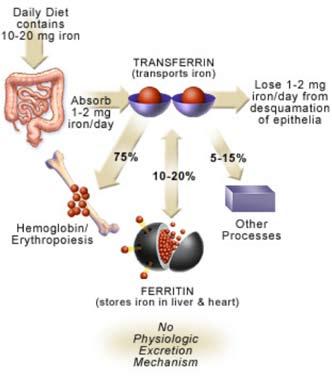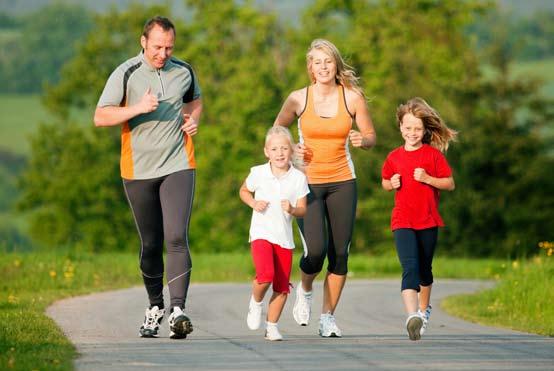
9 minute read
Iron for sport
BenefitS of iron for SPort And exerCiSe
carrie ruxton phD, freelance Dietitian
Advertisement
rin cobb, freelance sports Dietitian, pnD consulting
dr Carrie ruxton is a freelance dietitian who writes regularly for academic and media publications. A contributor to tv and radio, Carrie works on a wide range of projects relating to product development, claims, Pr and research. her specialist areas are child nutrition, obesity and functional foods.
rin’s years of experience working as a dietitian in the nhS and her love of the outdoors culminated in a unique sports nutrition service Pnd Consulting. rin has practiced in weight management, nutrition support and has specialised in kidney disease, childhood nutrition and eating disorders.
iron has several essential functions in the body for both health and sport, but despite our increased knowledge and understanding of the benefits and sources of iron, it is still the most common nutrient deficiency across the globe.
In the UK, women and teenage girls often do not meet their daily iron requirements and obtain most of their iron from less bioavailable sources. The requirement of endurance sports puts athletes at an increased risk of iron deficiency, which in turn can affect their sporting performance in a number of ways. Female and vegetarian athletes are also at an increased risk as they struggle to meet their basic daily iron needs, let alone any increased requirements that they may have for their sport.
role of iron in health Minerals, like vitamins, are classified as micronutrients and as such are only required in small amounts, but are, nonetheless, essential for normal body function1. Iron is one such mineral and has a number of roles within the human body. These include haemoglobin synthesis, oxygen transport within haemoglobin in blood and in muscle myoglobin, and enzyme production for the citric acid cycle and DNA synthesis2. The role of iron in the body is summarised in Figure 1.
Due to the toxicity of iron and limited options for excreting any excess, iron homeostasis is primarily regulated through iron absorption with this being up-regulated when iron stores are low. Of the total dietary iron consumes, less than 10% is absorbed in the upper intestine, with bioavailability being three times greater for haem iron (found in red meat) compared with non-haem iron (found in fortified foods and plant sources). Iron not immediately required for metabolic processes is stored temporarily by epithelial cells in the gastrointestinal tract but, due to their high turnover, both cells and their iron can then be lost in faeces.3
Once iron is absorbed, it is distributed by the protein transferrin to fulfil its bodily functions, with any surplus stored in the liver, spleen or bone marrow as ferritin. Ferritin levels can be affected by infection and inflammation, so this should be taken into account when interpreting biochemical tests, as these can raise ferritin levels even in the presence of an underlying deficiency.4
Iron levels can become low through blood loss, impaired absorption or inadequate dietary intake. Early symptoms such as fatigue, pallor, breathlessness and palpitations can be subtle and go unnoticed, but prolonged iron deficiency can ultimately lead to a reduction in red blood cell production and, in turn, low haemoglobin levels, resulting in iron deficiency anaemia. This is defined as haemoglobin (Hb) <13g/100ml in men and <12g/100ml in non-pregnant women4. However, it should be noted that cut-offs vary according to local reference ranges. Whilst low Hb is indicative of anaemia, it does not confirm whether it is due to iron deficiency, so additional tests, including ferritin and transferrin, should be requested.
Certain groups in the UK population are at an increased risk of iron deficiency, such as infants over the age of six months; toddlers, particularly those from low income families; women with high menstrual losses; pregnant women who already have low
iron stores on conceiving; vegetarians and vegans; and endurance athletes.1, 5 This is reflected in the most recent National Diet and Nutrition Survey (NDNS)6 which reported that only 1.5% of adult men were anaemic while 10% of women aged 19-64 years had Hb <12g/100ml.
iron anD perforMance The two primary factors that determine exercise performance are the exercising muscles oxidative capacity and the body’s maximum oxygen consumption, also known as VO2max.7 These are particularly important for endurance exercise where the body is working more aerobically and the demand for oxygen is greater.
As iron is multifunctional in the body, iron deficiency will influence exercise performance in multiple ways. Primarily, it limits the oxygen carrying capacity of the blood to exercising muscles including the heart, thus reducing VO2max. As iron is essential for oxidative energy metabolism, a deficiency will reduce energy production via this process and in response, anaerobic glycolysis will increase, thus further increasing the demand on carbohydrate for fuel.8 The other processes to which iron contributes will also be impaired and can lead to mental dysfunction, poor temperature control and weakened immunity.9 There is no doubt that iron deficiency anaemia will have a negative impact on athletic performance since ‘iron is the key to most physiological variables of athletic performance’7; however, what is less clear is the point at which iron deficiency is detrimental to an individual athlete. Peeling et al5 suggested iron deficiency can be categorised into three stages of severity for athletes as shown in Table 1. Endurance and female athletes appear to be at increased risk of iron deficiency in some form or another10 and, whilst Stage 3 is still reported to be rare amongst athletes and not dissimilar to the general population, a summary of surveys reported that 35% of female athletes had a ferritin <12ųg/L and up to 60% <30ųg/L.11
To test the effect that iron deficiency has on performance, most studies have performed an exercise test before and after iron supplementation. Despite some conflicting results, iron supplementation of non-anaemic iron deficient athletes (both men and women) has generally had a positive impact on endurance capacity, including VO2max, 15km time trial performance, work rate and lactate threshold.7,10,12
The American College of Sports Medicine (ACSM)13 acknowledges that iron deficiency with or without anaemia can have negative effects on both health and exercise performance. Since, reversing anaemia can take three to six months, prevention strategies are a more practical option. Whilst ACSM recognises that the iron requirements of endurance athletes can be increased by as much as 70%, there are no specific recommendations above and beyond the US RDA for this group.
A review by Zourdos et al12 suggests that iron supplementation should be based on blood tests and commenced if ferritin is <35mg/L
Stage 1:
iron depletion iron stores in bone marrow, liver and spleen are depleted ferritin <35ųg/l hb >11.5g/100ml transferrin saturation >16%
Stage 2:
iron deficient erythropoiesis erythropoiesis diminishes as iron supply to erythroid marrow is reduced ferritin <20ųg/l hb >11.5g/100ml transferrin saturation <16%
Stage 3:
iron deficient anaemia haemoglobin production falls resulting in anaemia ferritin <12ųg/l hb <11.5g/100ml transferrin saturation <16%
table 2: examples of iron-rich snacks and meals
iron rich meals
spaghetti Bolognese using lean mince with added carrots and spinach Baked beans on wholegrain toast pork chops, mashed potato and peas
Mackerel salad with tomatoes, peppers, baby spinach and potatoes Mixed bean stew lamb and apricot stew
using a dose of 100mg/day of haem iron and continuing until ferritin is approximately 60mg/L, which may take two to three months. There is currently no evidence to support any performance enhancing effects of supplementation in athletes who have a normal iron status.
Dietary sources of bioavailable iron, such as that found in red meat, should be optimised to prevent iron deficiency. A study by Lyle et al14 demonstrated that meeting iron requirements (American RDA 18mg/d) through diet, including extra red meat, was as effective as a 50mg/day iron supplement for protecting ferritin status in active women. Dietary interventions may also attract better compliance than supplementation. The role of meat in providing bioavailable iron was also noted by the European Food Safety Authority which is currently reviewing Dietary Reference Values for iron.15
intaKe anD soUrces The Reference Nutrient Intake (RNI) for iron in the UK is 8.7mg/day for men and 14.8mg/ day for women aged 19-50 years14; however, only 78% of women meet the RNI through diet. More concerning is the fact that 23% of
iron rich snacks for exercise
Dried fruit
fortified milk drinks recovery drinks
peanut butter on wholegrain toast
Bowl of fortified breakfast cereal fortified breakfast biscuits
women have iron intakes below the lower RNI of 8.0mg/day which indicates a higher risk of deficiency in this group.6. As already discussed, whilst athletes, particularly endurance athletes, are likely to have increased iron requirements, no additional recommendation has been agreed. Results from the NDNS support US-led advice13 that female, endurance and vegetarian athletes should pay particular attention to their diet and have their iron status tested several times per year due to an increased risk of iron deficiency.
The main sources of iron in the UK diet are bread and fortified cereals, providing 39% of our daily recommendation and meat, contributing 1821% for adults (11-13% for children). The bioavailability of iron from different food sources should be considered in addition to intakes, as haem iron is more effectively absorbed than non-haem iron sources. Fortified cereals, the largest contributor to daily iron intakes, contain non-haem sources, so that only up to 15% is absorbed, whereas red meat, which is a source of haem iron, allows up to 30% to be absorbed.2 Official guidelines recommend a daily average intake of 70g red and processed meat to ensure adequate iron intakes, but women and teenage girls, on average, consume

only 45-56g. Red meat intakes appear to be adequate for most males.
Due to the impact of iron on health, several health claims have been approved in Europe, the most commonly used being that iron helps to reduce tiredness and fatigue, and supports normal immune function and normal cognitive function. To use these claims, foods and drinks must provide an official ‘source’ of iron, i.e. at least 15% of the EU RDA (1.2mg for men and 2.2mg for women). A claim has also been approved that ‘meat or fish contributes to the improvement of iron absorption when eaten with other foods containing iron’ with a condition that the meal must contain at least 50g meat or fish.17
conclUsion At a minimum, athletes should ensure that their diets contain at least the RNI for iron. Other tips for active individuals are suggested below: • Athletes, particularly women and those participating in endurance events, should pay particular attention to dietary iron intakes and have iron status checked routinely. • Any iron deficiencies, such as ferritin <35mg/L, should be corrected to prevent iron deficiency anaemia. • Increase foods high in iron, particularly haem sources, such as red meat. The weekly guideline is 500g cooked red and processed meat. • Vegetarian athletes should aim to eat ironrich plant foods, such as beans and pulses, on a daily basis and should consider a mineral supplement.
Some examples of iron-rich snacks and meals are shown in Table 2. The main meal could include a 150ml glass of pure fruit juice to improve iron absorption.
Acknowledgment
Funding for this review was provided by the Meat Advisory Panel (MAP) which is a group of experts who provide independent and objective information about red meat and its role as part of a healthy, balanced diet. MAP is supported by an unrestricted educational grant from the Agriculture and Horticulture Development Board. For more information, visit www.meatmatters.com.








